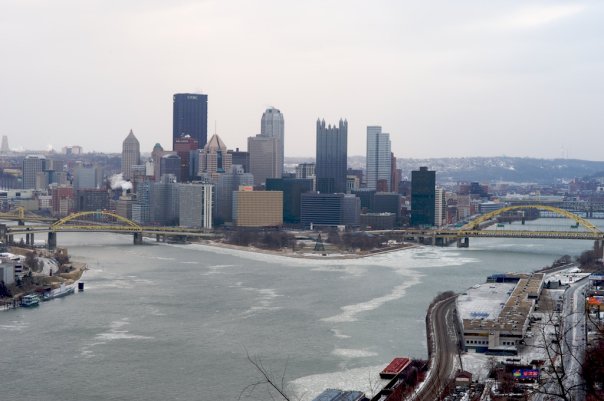
Lochry’s Defeat started in 1781 when Archibald Lochry raised a militia unit in Westmoreland County, Pennsylvania. About one hundred men set off down the Ohio River from Fort Pitt (which later became Pittsburgh). A few weeks later, the entire group ended up captured or killed.
Archibald Lochry was a Westmoreland County leader during the American Revolutionary War. The British occupied Detroit. The American colonists in Western PA were at war with the British and their Native American allies. Many of these Native American allies attacked from the Ohio territory west of PA.
(The colonists referred to the British general in Detroit as “Hair Buyer Hamilton” because the British paid for the scalps of American colonists.)
Thomas Jefferson, then the governor of Virginia, promoted George Rogers Clark to the Virginia rank of Brigadier General. In 1781, Clark left Fort Pitt to navigate down the Ohio River into the Ohio territory.
Lochry and his militiamen followed in their own flotilla some time later. Lochry was supposed to meet up with Clark’s expedition downriver. Unfortunately, after a number of issues including supplies, communication, and the threat of desertions among Clark’s men, Lochry missed Clark several times. Lochry never caught up to Clark.
In August 1781, Joseph Brant and George Girty led Native Americans allied with the British. (George Girty was Simon Girty‘s brother.) This group set out looking for Clark.
Brant and Girty instead surprised Lochry, who had stopped on the banks of the Ohio River in present-day Indiana. Brant and Girty ambushed Lochry and killed him. They killed dozens of his men and took the rest prisoner.
The families back in Westmoreland County didn’t learn about this until a significant time later.
The Wikipedia entry for this event also refers to it as the Lochry Massacre. I chose to not use the word “massacre” because indignenous people were involved in the victory. I explained my choice of semantics in this other blog post.
If you want a much more detailed account of Lochry’s Defeat and Clark’s expedition, by all means go read the Wikipedia entry on this. The Wikipedia page includes a photo of the Lochry’s Defeat site in Indiana. I also saw in this photo some military equipment that I believe came from a 20th century war. To be honest, at first glance I mistook this equipment to be an empty boat trailer. (This is IS along the Ohio River banks.)
I wrote today’s blog post for all of the people who, like me, don’t remember learning about this in high school history class. In fact, I never even heard this story from my Westmoreland County family members who first told me about Simon Girty. I learned about Lochry’s Defeat from the historical fiction novel “The Day Must Dawn” by Agnes Sligh Turnbull.
Just to keep this in context with other local history, Lochry’s men from Westmoreland County set off from Fort Pitt in the summer of 1781. Lochry’s Defeat happened in Indiana in August 1781. The Crawford Expedition set off down the Ohio River in May 1782. (William Crawford led this expedition. Most of his militiamen came from Westmoreland and Washington counties.) The British and their Native American allies captured and executed Crawford in Ohio in June 1782. Simon Girty was present at Crawford’s execution. Then, the British and their Native American allies attacked and burned Hannastown in Westmoreland County in July 1782. The Revolutionary War ended in 1783.
According to Wikipedia, Joseph Brant allegedly got into a violent, drunken brawl with Simon Girty over the issue of whether Brant or George Girty deserved the credit for Lochry’s Defeat. Brant was a Mohawk military leader and Girty (who was himself raised by Native Americans) has an infamous reputation in frontier America. At least one Canadian monument refers to Simon Girty as a British Loyalist. Keep this in mind when you read such tales.